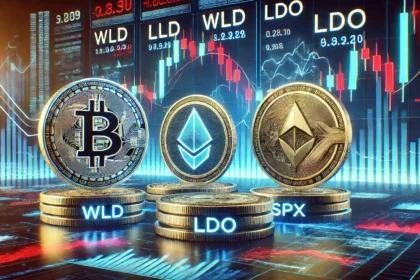Monero (XMR) has faced significant challenges recently, experiencing double-digit monthly losses after concerns about its privacy features were raised. Meanwhile, the decline in Polygon’s (POL) performance appears connected to a growing interest in acquiring Lunex Network. Let’s explore the implications of XMR’s struggles and how Lunex Network’s rising prominence might be influencing the broader cryptocurrency market.
Monero (XMR) Faces Intense Regulatory Concerns
Kraken’s decision to delist Monero (XMR) in the EEA shocked the market, raising concerns about regulatory scrutiny on privacy coins. Monero’s technology, which obscures transaction details, has attracted regulatory attention for years, and the upcoming MiCA framework seems to tighten regulations further.
What caught attention was the timing of Monero’s price drop. Allegations suggest that Monero began selling off before Kraken’s delisting announcement, leading to speculation that insiders may have acted on non-public information. This situation is particularly suspicious, given that the broader cryptocurrency market was rallying at the time while Monero experienced a sharp decline.
Despite the regulatory challenges Monero faces, supporters of privacy coins remain hopeful. Many believe that Monero’s focus on anonymous transactions keeps it relevant, regardless of exchange delistings.
Polygon (POL) Continues To Decline
While Bitcoin and the broader crypto market finished September positively, Polygon’s native crypto, POL (formerly MATIC), encountered several challenges. Initially, there was optimism surrounding the Polygon ecosystem’s token swap, but POL’s price diverged from the overall bullish sentiment last month.
Conversely, Polygon’s decline raises concerns, as data from IntoTheBlock indicates that up to 95% of token holders are experiencing unrealized losses. This includes 81% of long-term holders who have retained the token for a year, during which Polygon has decreased in value by 37%.
The Ethereum Layer-2 scaling network implemented an upgrade in early September while transitioning from MATIC to POL to enhance utility and flexibility. However, despite the excitement around this milestone, Polygon experienced a reversal in gains during the final week of the month. In the past week, Polygon’s price plummeted from $0.446 on September 28 to $0.3775 as of press time.
Lunex Network (LNEX) Offers Traders Unmatched Interoperability
Lunex Network simplifies and accelerates the process for traders and investors to swap, buy, sell, or stake their tokens while keeping transaction fees very low. Users no longer need to switch between platforms since Lunex Network supports multiple blockchains. This capability allows transactions to occur on over 50,000 cryptocurrencies without leaving the Lunex Network platform.
Additionally, Lunex Network features a DeFi crypto wallet that enables users to manage all their assets effectively. Users also gain instant access to more than 65 RPC nodes to support their web3 development needs.
The offerings don’t stop there. Lunex Network includes a portfolio tracker, keeping investors updated in real-time on their assets’ performance. $LNEX is currently in stage 2 of its presale, with each token priced at just $0.0013. This price is expected to increase by 500% as demand rises.
Amid the bearish pressure on Polygon and the regulatory challenges facing Monero, Lunex Network is experiencing a booming presale with rapidly increasing token demand. Consequently, $LNEX is poised to hit over 1,800% in returns after the end of the presale.
You can find more information about Lunex Network (LNEX) here:
Website: https://lunexnetwork.com
Socials: https://linktr.ee/lunexnetwork





























